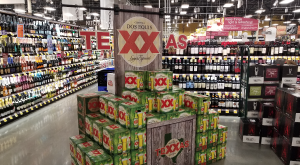Visual merchandising plays a critical role in the success of retail businesses by attracting...
Point of Purchase Advertising: Effective Examples and Strategies
Did you know that nearly 76% of purchase decisions are made in-store? This staggering statistic underscores the importance of Point of Purchase (POP) advertising in influencing consumer behavior at the critical moment of decision. In this blog, we’ll explore the various facets of POP advertising, from understanding its significance to showcasing successful examples and strategies for implementation. Whether you’re looking to enhance your store end cap displays or improve your overall visual merchandising, this guide is for you.
Understanding Point of Purchase Advertising
Definition and Importance
Point of Purchase (POP) advertising refers to marketing materials or advertising placed next to the merchandise it is promoting. These materials are designed to attract customers' attention, provide product information, and stimulate purchases. POP advertising plays a crucial role in retail by leveraging the physical retail environment to drive sales and enhance the shopping experience.
Types of POP Advertising
There are various types of POP advertising, each serving a unique purpose:
- Displays: These include floor stands, shelf talkers, and dump bins that prominently feature products.
- Signage: Banners, posters, and window clings that convey promotional messages.
- Digital Screens: Interactive displays and digital signage that engage customers through dynamic content.
Key Elements of Effective POP Materials
Design Principles
Effective POP materials combine visual appeal with functional design. Here are some key design principles:
- Color Schemes: Use vibrant colors that align with your brand and catch the eye.
- Typography: Clear, legible fonts that communicate your message quickly.
- Layout: Balanced and uncluttered layout that highlights the product and its benefits.
Material Choices
Choosing the right material for your POP displays is crucial for durability and impact:
- Cardboard: Lightweight and cost-effective but less durable.
- Plastic: More durable and versatile but can be more expensive.
- Metal: Highly durable and gives a premium feel but is costly.
3 Examples of Successful POP Advertising
1: Heineken F1 Car Retail Floor Display



This large format F1 car replica floor display for Heineken. 12-pack bottles were used to complete the shape of the car and additional packs were stacked around the display to provide a large number of shoppable beer with the display. This project was designed and produced by KraftWork.
2: Heineken MLS Cup Pole Topper


Sports-themed POP retail displays are an effective strategy to capitalize on current sporting events. This 3D Pole Topper was designed for Heineken in the shape of the MLS Cup trophy. This project was designed and produced by KraftWork.
3: Crystal Head Vodka Tiered Case Riser


This standard 750ml bottle case riser was enhanced with shelf tiers to give better visibility to CHV’s unique 750ml skull-shaped bottles. The high gloss digital printing further enhanced the stunning artwork and was a huge success in-store. This project was designed and produced by KraftWork.
Strategies for Implementing POP Advertising in Your Store
Planning and Execution
Implementing a successful POP advertising campaign requires careful planning:
- Identify Goals: Define what you want to achieve with your POP materials.
- Design and Produce: Create designs that are visually appealing and align with your brand.
- Placement: Strategically place POP materials in high-traffic areas.
- Monitor and Adjust: Track performance and make adjustments as needed.
Measuring Success
To gauge the effectiveness of your POP advertising, focus on key metrics:
- Sales Lift: Measure the increase in sales of the promoted products.
- Customer Engagement: Track customer interactions with the POP materials.
- Return on Investment (ROI): Calculate the financial return compared to the cost of the campaign.
Trends and Future of POP Advertising
Current Trends
Stay ahead of the curve by embracing the latest trends in POP advertising:
- Sustainability: Eco-friendly materials and designs are becoming more popular.
- Technology Integration: Incorporating AR/VR and interactive elements to enhance customer experience.
Future Predictions
Looking ahead, we can expect further advancements in POP advertising:
- Personalization: Customized POP displays tailored to individual shopper preferences.
- Augmented Reality: AR experiences that bring products to life in-store.
Conclusion
In summary, Point of Purchase advertising is a powerful tool for driving sales and enhancing the shopping experience. By understanding its key elements, implementing effective strategies, and staying updated on current trends, retailers can maximize the impact of their POP advertising efforts. Evaluate your current strategies and consider integrating some of the examples and tips shared in this blog to elevate your retail game.
Design Your Perfect Beverage Display or Packaging with Kraftwork
Save time and money with our pre-engineered displays. Need something custom? Our creative team is ready for the challenge. We offer a streamlined process and unmatched beverage industry expertise.




